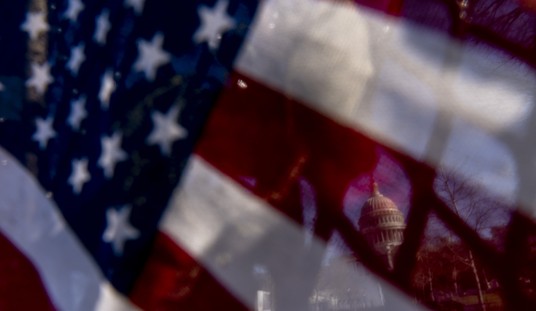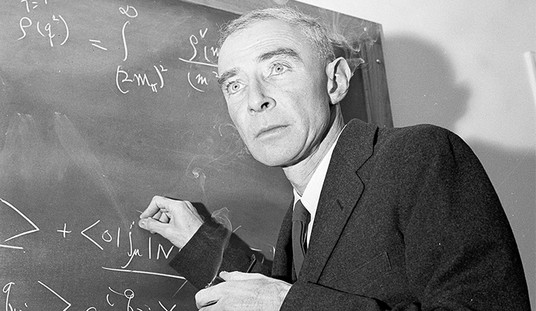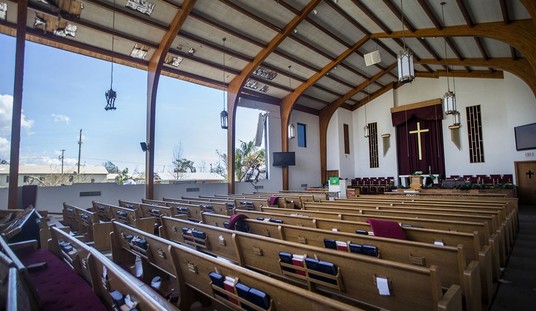The US economy added fewer jobs in July than in the previous three months, and the unemployment rate ticked up slightly, although job creation still outpaced population growth. The addition of 209,000 jobs is the lowest level since March, while the slight change in the jobless rate is the first uptick since January:
Total nonfarm payroll employment increased by 209,000 in July, and the unemployment rate was little changed at 6.2 percent, the U.S. Bureau of Labor Statistics reported today. Job gains occurred in professional and business services, manufacturing, retail trade, and construction.
Both the unemployment rate (6.2 percent) and the number of unemployed persons (9.7 million) changed little in July. Over the past 12 months, the unemployment rate and the number of unemployed persons have declined by 1.1 percentage points and 1.7 million, respectively. (See table A-1.) …
Among the major worker groups, the unemployment rate for adult women increased to 5.7 percent and the rate for blacks edged up to 11.4 percent in July, following declines for both groups in the prior month. The rates for adult men (5.7 percent), teenagers (20.2 percent), whites (5.3 percent), and Hispanics (7.8 percent) showed little or no change in July. The jobless rate for Asians was 4.5 percent (not seasonally adjusted), little changed from a year earlier. (See tables A-1, A-2, and A-3.)
Both the U-3 (the official jobless rate) and U-6 measures moved up slightly in July. U-3 went from 6.1% to 6.2%, and U-6 from 12.1% to 12.2%. These may not reflect moves of much significance, and could be rounding artifacts, but it’s worth noting that both moved up slightly.
There was a little good news on the full-time/part-time front. The number of workers in part-time jobs for economic reasons dropped a bit, from 7.544 million to 7.511 million. That’s still the second-highest reading of the year and well above May’s 7.269 million, but it suggests that the growth in jobs for July came in full-time positions — unlike that in June. On the other hand, the ranks of government workers swelled again to 20.453 million, an increase from June of 96,000. That is the highest level of government workers in the economy all year, and over 400,000 more than since May — and these figures are seasonally adjusted.
MSN noted that the report missed expectations, and says “growth cools” in July:
U.S. job growth slowed in July and an unexpected rise in the unemployment rate pointed to some slack in the labor market that could give the Federal Reserve room to keep interest rates low for a while.
Nonfarm payrolls increased 209,000 last month after surging by 298,000 in June, the Labor Department said on Friday.
Data for May and June were revised to show a total of 15,000 more jobs created than previously reported, showing underlying momentum and taking some of the sting from the report. …
Economists polled by Reuters had expected payrolls to increase 233,000 last month and the unemployment rate to hold steady at 6.1 percent.
The cooling in hiring is unlikely to change perceptions about strong economic growth in the third quarter.
“It still points to a job market and an economy that is improving, but we also have the absence of wage pressures building, which is becoming another concern for investors,” said Sean Lynch, managing director of global equity and research strategy at Wells Fargo Private Bank in Omaha, Nebraska.
The Wall Street Journal gives a tepid thumbs-up:
In July, hiring was broad-based. Payrolls rose in the professional and business services, manufacturing, retail, construction and public sectors.
But much pain remains in a labor market that still bears scars from the 2007-09 recession. Some 3.2 million people in July had been out of work for more than six months, down 1.1 million from a year earlier but still accounting for 32.9% of all unemployed Americans. The number of people working part-time jobs because they couldn’t find full time work was 7.5 million in July, largely unchanged from June.
A broad measure of unemployment known as the U-6, which includes people working part-time jobs because they can’t find full-time work and people who are marginally attached to the labor force, was 12.2% in July. That’s up slightly from 12.1% in June but down 1.7 percentage points from 13.9% in July 2013.
The labor-force participation rate ticked up slightly in July, to 62.9% from 62.8% in June, but remained near its lowest level since the late 1970s.
Wage gains remained sluggish in July. Average hourly earnings for private-sector workers rose 1 cent from June to $24.45 last month, up 2% from a year earlier.
The average workweek in July was unchanged at 34.5 hours.
The US economy needs to add 150,000 jobs a month just to keep up with population growth at the current workforce participation rate. At the rate we are adding jobs in July, it would take us another four and a half years to re-employ the 3.2 million chronically unemployed noted in the report. Even at last month’s pace, we’d be almost two years in regenerating those jobs, and that’s assuming we can sustain the 298,000 pace for a solid two years — when we haven’t been able to do so for any length in the five-plus years of the Obama recovery.
I’d be curious to know where the government is doing all that hiring, too. That metric has fluctuated quite a bit this year, but it’s definitely trending upward.
Update: Jim Pethokoukis says the economy has finally hit its stride … and that’s the problem:
In other words, the Obama recovery seems to have hit its sweet spot. And that’s the problem. This may be as good as it gets given that the expansion is five-years old and GDP growth seems stuck in low gear. The US employment rate of 59.0% is still well below its prerecession level of 62.9%, a gap of nearly 10 million jobs. There are still 3.2 million long-term unemployed vs. 1.3 million in December 2007. And as Capital Economics points out, “Despite the strength of employment gains and the decline in the unemployment rate, there is still no sign of an acceleration in average hourly earnings, which were unchanged in July.” …
We have a long way to go, and we are getting there oh-so slowly. Here are two more stats for you: 1.) Since 2000, the US economy has generated 5.2 million private-sector jobs vs. a total of 42.5 million in the 1980s and 1990s; 2.) The US economy has only produced three quarters of 4% or faster growth since 2000 vs. 36 in the 1980s and 1990s. There is little happening in the economy right now that suggests this expansion will ever be a whole lot more than what it currently is.







Join the conversation as a VIP Member